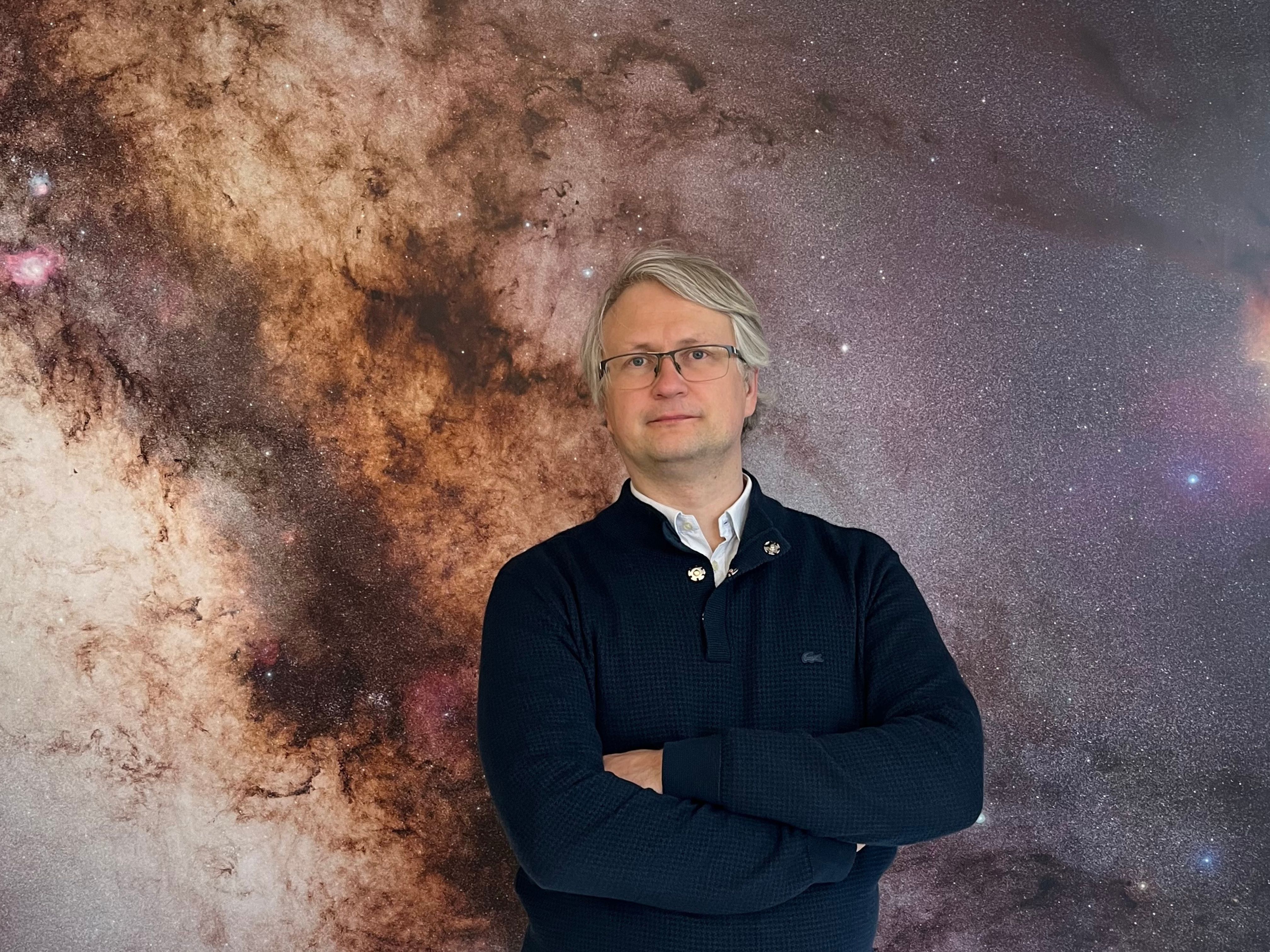VU Astrophysicists Collaborate with Polish Researchers to Study the Evolution of Life-Essential Elements in Space
 VU physicist Assoc. Prof. Šarūnas Mikolaitis
VU physicist Assoc. Prof. Šarūnas Mikolaitis
Scientists from the Institute of Theoretical Physics and Astronomy at Vilnius University (VU) Faculty of Physics, in collaboration with colleagues from the Nicolaus Copernicus Astronomical Centre of the Polish Academy of Sciences, are conducting an international study to explore the evolution of life-essential chemical elements in the cosmos. The astrophysics team is studying the abundance of carbon, nitrogen, and oxygen in stars within the Milky Way galaxy. The researchers hope to uncover the stellar and Galactic evolutionary processes that influence the distribution of these elements.
According to the researchers, aside from hydrogen and helium – which formed and spread through the cosmos shortly after the Big Bang – carbon, nitrogen, and oxygen are the three most abundant elements in the Universe. These elements are essential for life.
“These well-known chemical elements, produced in stars, are dispersed throughout the Universe as those stars reach the end of their life cycles. This is how carbon, nitrogen, and oxygen appeared in our environment and became fundamental components of all life on Earth. They form the basis of key molecules such as carbon dioxide, methane and water. Our research into the origin and evolution of these elements may offer valuable insights into the distribution of life-supporting elements beyond Earth,” VU physicist Assoc. Prof. Šarūnas Mikolaitis says.
The researchers explained that their team would record stellar light spectra using the “VUES” spectrograph. “VU’s high-resolution spectrograph is a powerful instrument that disperses starlight, separates it by wavelength, and records the full visible spectrum emitted by a star in great detail. A spectrograph is a device used to analyse light from stars and other celestial objects to determine their composition, as every chemical element leaves a distinct signature in the emitted light. This allows us to uncover what stars and other celestial objects are made of,” explains Assoc. Prof. Arnas Drazdauskas.
This instrument enables researchers to precisely determine the abundances of carbon, nitrogen, and oxygen, as well as the ratios of different carbon isotopes – capabilities not possible using data from the European Space Agency’s Gaia space telescope alone.
The project will also utilise archival spectroscopic data from the VU Molėtai Astronomical Observatory, obtained by observing stars near the Sun. By combining these observations with innovative methods, the team aims to determine not only the abundance of the studied elements but also the ages of stars with at least 10% accuracy.
“This is a remarkable achievement in Galactic archaeology. One of the interesting aspects of this project is that together with large surveys, it will include spectroscopic observations of solar neighbouring stars conducted at the VU Molėtai Astronomical Observatory,” says VU astrophysicist Dr Carlos Viscasillas Vázquez.
The research team will study stars using data from large-scale astronomical surveys such as the European Space Agency’s Gaia space telescope, the APOGEE (Apache Point Observatory Galactic Evolution Experiment) spectroscopic survey, the GALAH (Galactic Archaeology with HERMES) survey, and the Gaia-ESO Public Spectroscopic Survey.
The Polish research team will investigate how nitrogen, carbon, and oxygen have enriched different regions of the Galaxy over time, tracing their origins across the Milky Way. The Lithuanian team will focus on stellar evolution, including how processes like magnetic activity and mixing within stars affect CNO abundance.
The project “The History of Carbon, Nitrogen, and Oxygen in the Galaxy” is led in Lithuania by Associate Professor Š. Mikolaitis and in Poland by Dr Rodolfo Smiljanic.
This international research effort will be the first to map the detailed distribution of carbon, nitrogen, and oxygen across a large portion of the Galaxy, taking into account both the chemical and dynamic properties of stars. This is a significant scientific contribution, expected to offer new and more accurate insights for astrophysicists and exoplanet researchers.
The project is funded through the DAINA 3 program, which supports Polish–Lithuanian scientific collaboration. (Project number: S-LL-24-4).